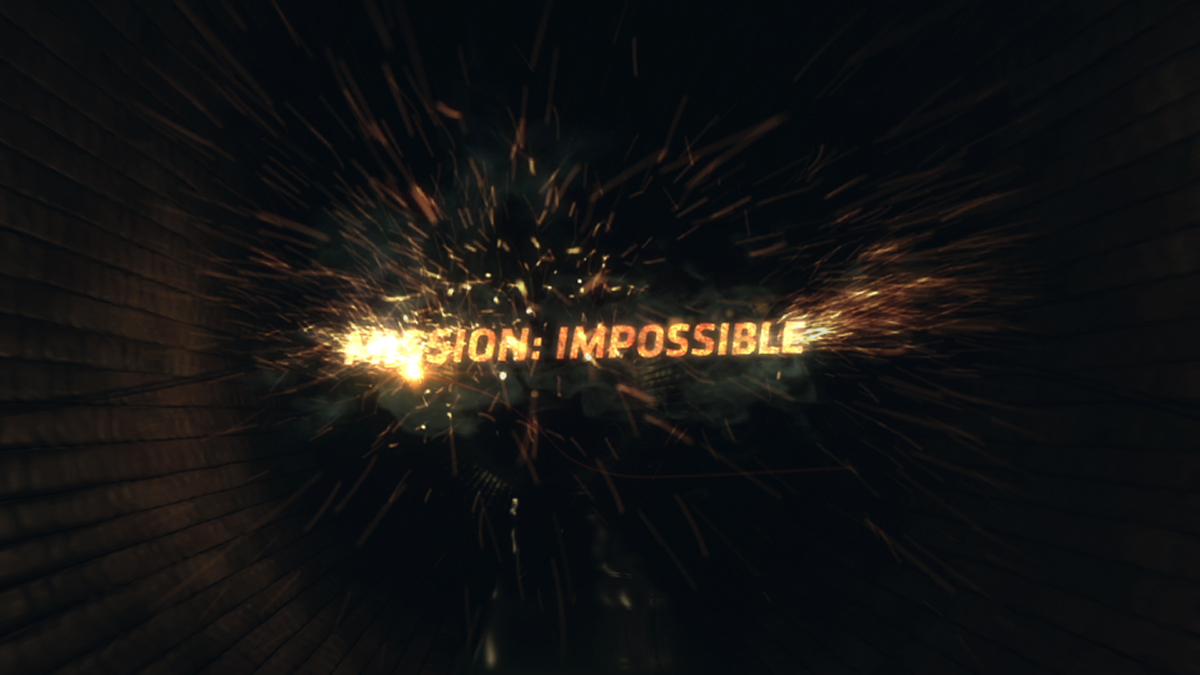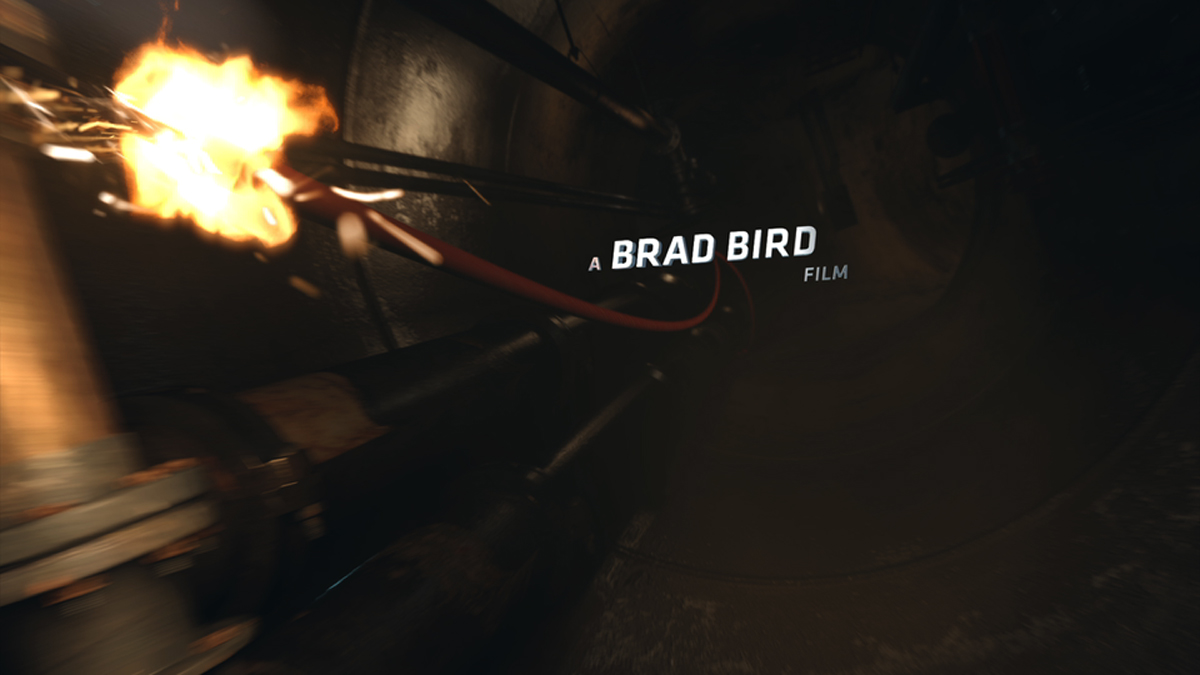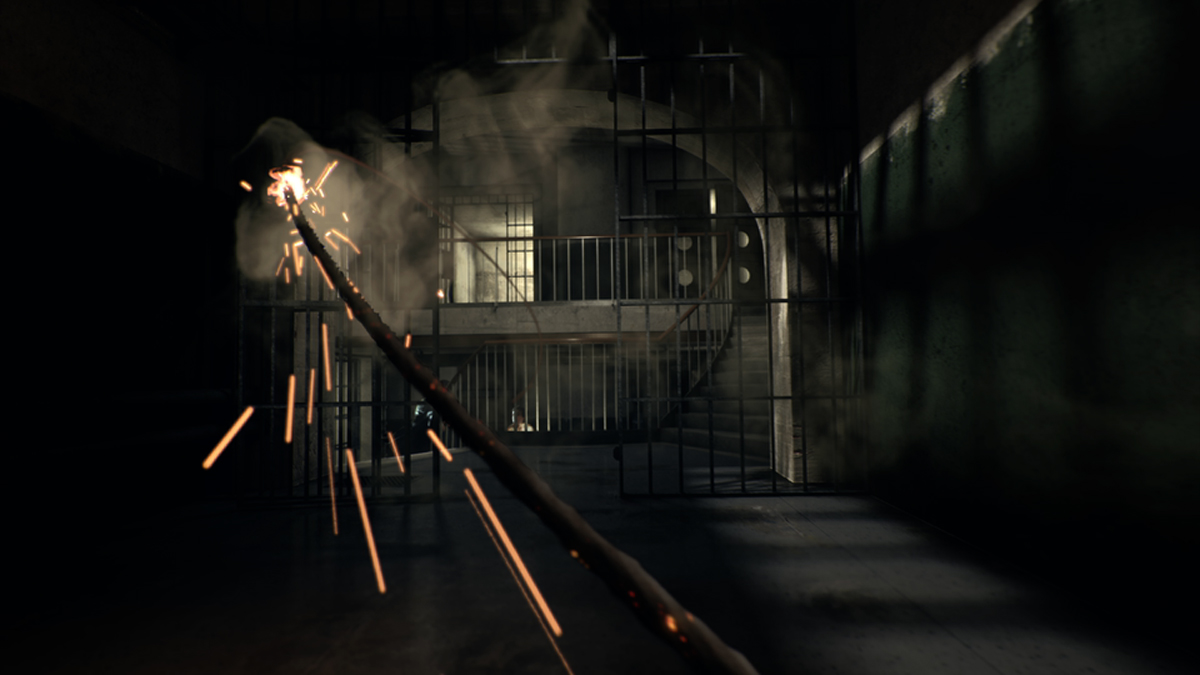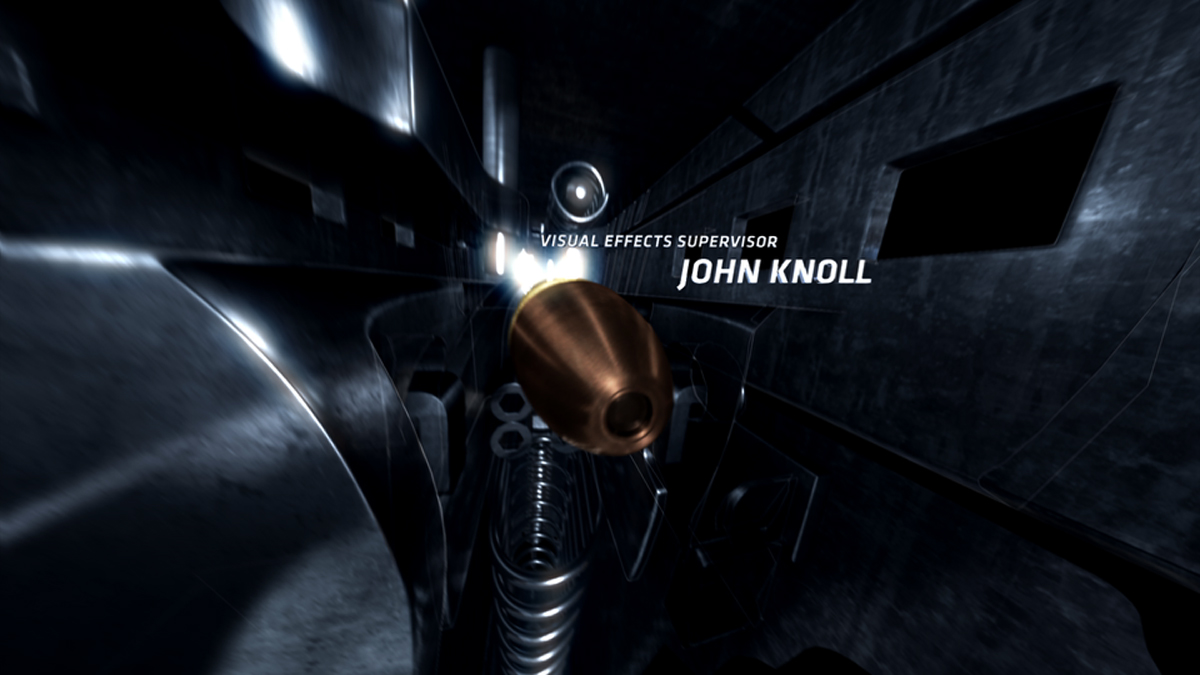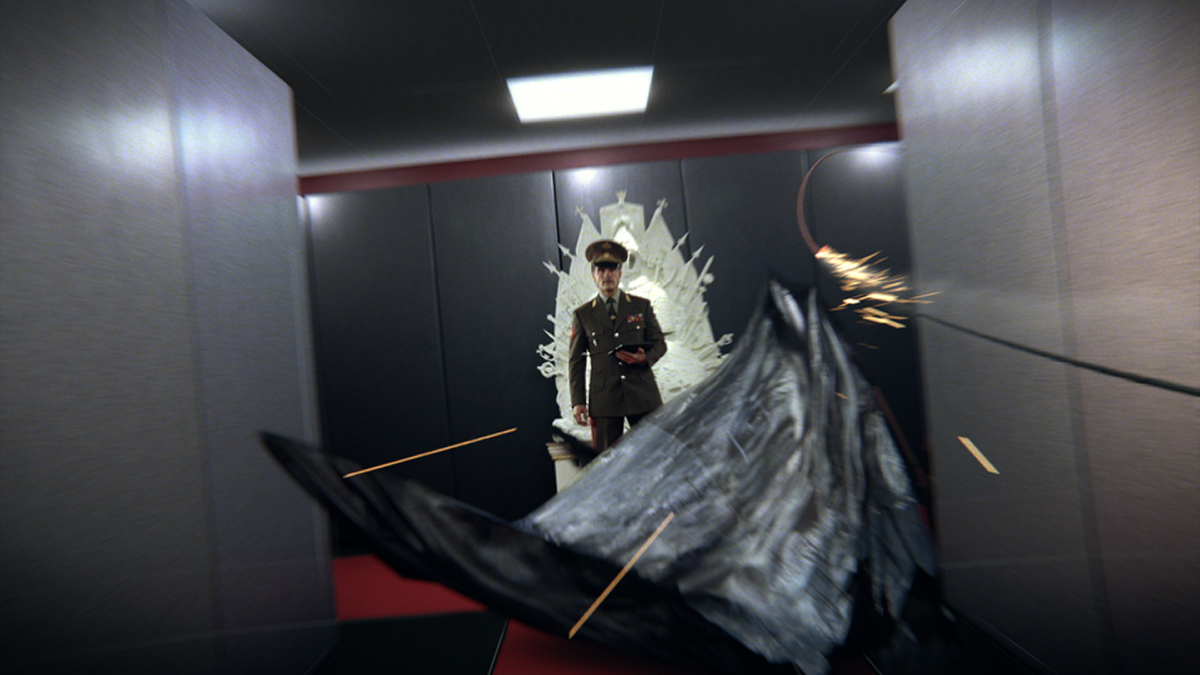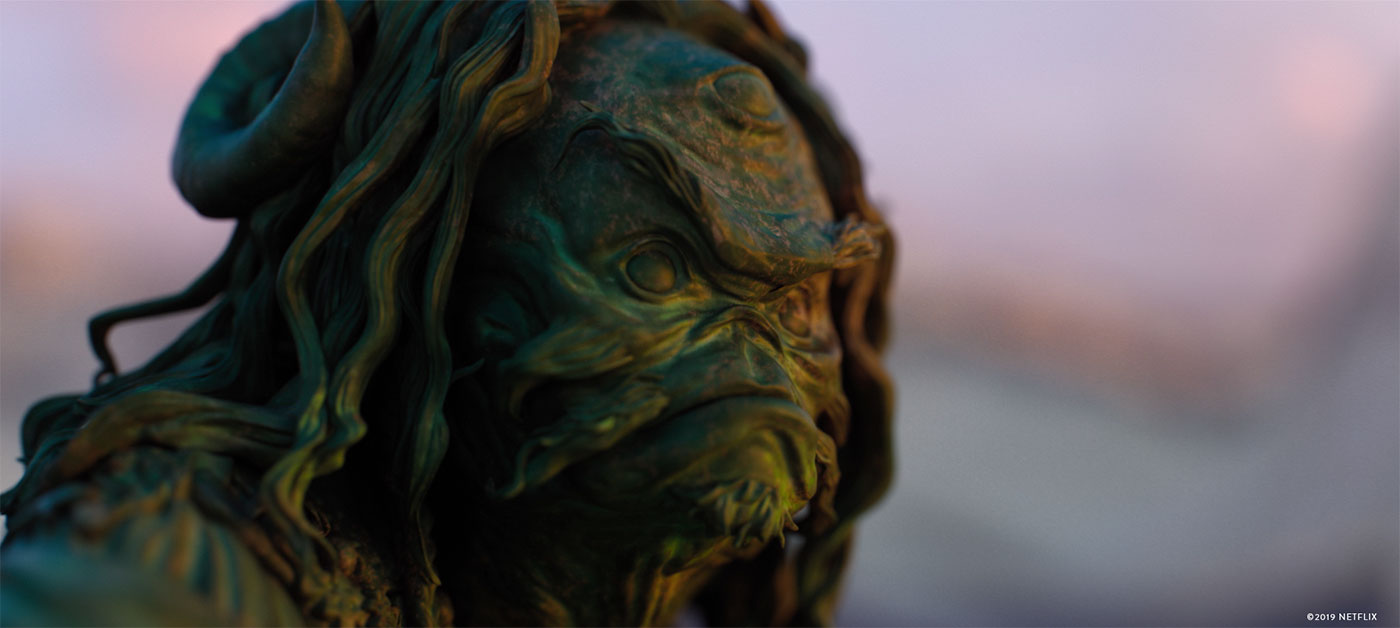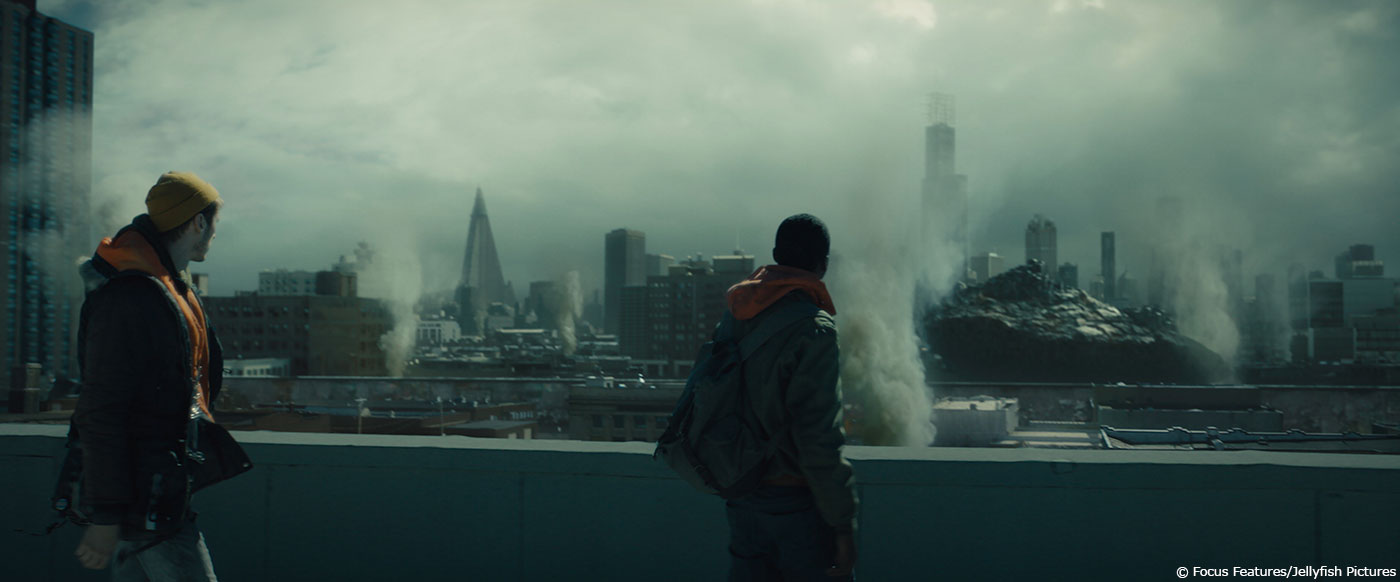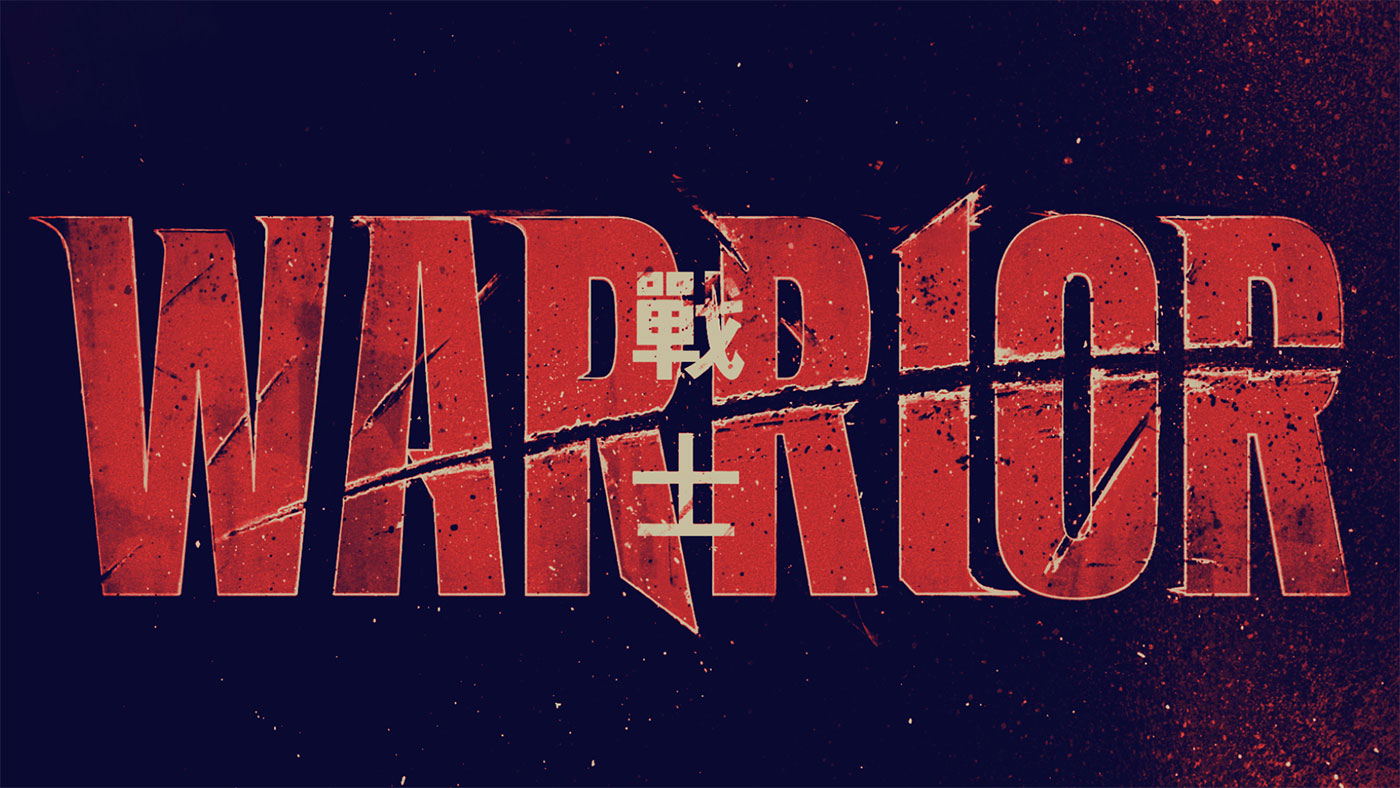Kyle Cooper has designed and directed over 150 film title sequences, the most known is SEVEN. Among his recent work, we find THE WALKING DEAD, FINAL DESTINATION 5 or X-MEN FIRST CLASS. He is the founder of the studios Imaginary Forces and Prologue Films.
Ahmet Ahmet worked over 10 years in the creation of film title sequences. He handled the title of movies such as THE ONE, SPIDER-MAN, IMAGINE THAT or THE TWILIGHT SAGA: ECLIPSE.
How did Prologue get involved on this show?
Prologue was invited to submit ideas for the proposed opening sequence. Three other companies were also invited to tender ideas, as it was a competitive pitch. However, Kyle had worked with editor Paul Hirsch on the first MISSION IMPOSSIBLE main title and the direction was similar to that film. Brad Bird liked our work so we felt like we had a good chance.
How was the collaboration with director Brad Bird?
The collaboration was a very close one. Brad had already formulated the idea to pay homage to the original TV series’ title sequence by using content from the show and investigating interesting ways to integrate the burning fuse.
What were his expectations for the main title?
Brad’s expectation was to create a sequence that paid homage not only to the TV show’s original sequence, but also to the art of the full main title. In this regard, we chose live action elements that expanded on the action of the movie and showed the action from different points of view, using B-roll footage, effects and shots that were specific to the opening sequence. The idea and the challenge was to integrate the fuse into every scene.
Brad also had the idea of scripting the opening moment of the title. The character Ethan, played by Tom Cruise, delivers the opening line: “Light the fuse.”
Can you tell us the indications and references he gave to you?
Brad had eight scenes that he had composed specifically with the main title in mind. He used an IMAX camera and a dolly move through these scenes. The title required many more set-ups, so we expanded upon the idea by creating more environments that could take us on this fantastic journey.
Did you use some previs or animatic to block the animation?
In our initial presentation, we showed the entire sequence in previs. We wanted to show the complete journey in order to do justice to the concept. This obviously evolved with different editorial cuts.
Can you tell us in detail the creation of the different environments?
The first challenge was to recreate the tunnel environments at the beginning of the sequence, and seamlessly transition from the live action into our CG. Using Maya, Cinema 4D and a combination of set extension techniques, we rebuilt many of the scenes in order to accommodate the choreography of the fuse and typography. The whole sequence involved a very tight combination of effects and live action.
How did you create the flames going through the environments?
Our effects team created the sparks and flames. These elements were generated entirely in CG.
How did you manage so many elements?
The number of elements was not the only challenge – our schedule was short to deliver such a CG intense sequence. Organizing the elements to accommodate render times was a key component.
Which software did you used to achieve this main title?
We used a combination of Maya, Cinema 4D and Houdini. For compositing, we used After Effects, Nuke, Flame and Inferno.
What was the biggest challenge on this project and how did you achieve it?
Schedule. Time was of the essence to get the best we could possibly achieve.
The editorial process became critical, since so much of our CG and choreography was totally dependent on the scene order and selection. To change one aspect of a scene meant that all effects, CG, texturing, lighting and modeling had to change as well. It was like a domino effect. We basically worked every hour available to make the deadline.
What do you keep from this experience?
All challenges are rewarding if you can rise to them. Teamwork and some very talented people made this possible.
How long have you worked on this title?
A total of five weeks from our initial presentation.
What was the size of your team?
There were lots of animators and compositors involved, but the core team was Ahmet Ahmet, Kyle Cooper, Adam Swaab, Jose Ortiz, Andrew Honacker, Nate Park, Ian Dawson and Ty Van Huisen.
What is your next project?
That’s confidential at this time, although we just finished SHERLOCK HOLMES: A GAME OF SHADOWS and numerous VFX shots for TWILIGHT SAGA: BREAKING DAWN – PART 1.
What are the four movies that gave you the passion for cinema?
BUTCH CASSIDY AND THE SUNDANCE KID, THREE DAYS OF THE CONDOR, THE DEAD ZONE, CHARIOTS OF FIRE, PLATOON and HENRY V.
A big thanks for your time.
// WANT TO KNOW MORE?
– Prologue: Official website of Prologue Films.
© Vincent Frei – The Art of VFX – 2012


